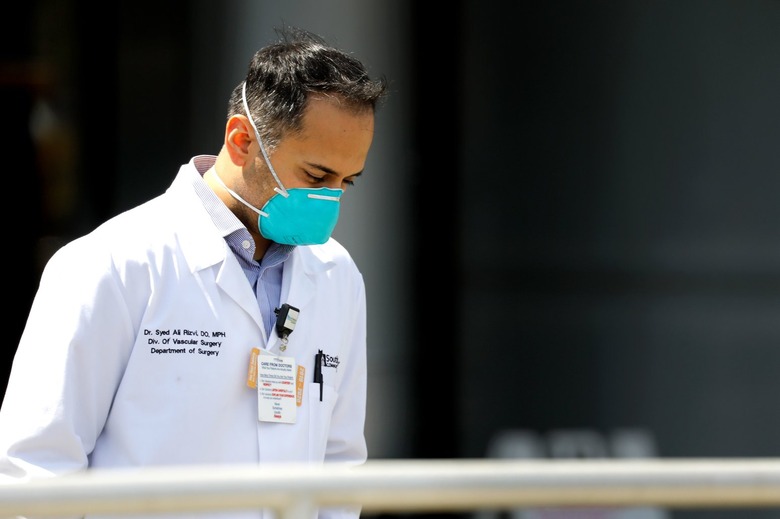CDC: Coronavirus Began Spreading In The US Much Sooner Than We Thought
- The novel coronavirus began spreading in the US even earlier than believed, according to new research from the Centers for Disease Control and Prevention (CDC).
- COVID-19 community transmission may have happened as early as January, several weeks before the original official estimate.
- The study proves the failure of authorities at finding coronavirus patients and stopping the spread of the disease at a time when the dangers surrounding COVID-19 were already known.
The novel coronavirus started to spread in the US in late January. We know that since the first diagnosed case dates back to January 20th. A recent report suggested that the first COVID-19 patient in the US may have been infected at some point in mid-December, several weeks ahead of the first confirmed case. Similar research from Europe indicates the virus could have reached the continent as early as mid-November, at a point when the world had no idea that a new virus was circulating. Then autopsy results showed that a patient died of COVID-19 in California as early as February 6th, three weeks earlier than the first reported COVID-19 death in America.
The CDC now says that it found limited evidence of the early spread of COVID-19 within the US in late January and early February. The agency says that until late February, "COVID-19 incidence was too low to be detected by emergency department syndromic surveillance for COVID-19–like illness."
The CDC thinks that a single imported case from China that has not been identified might be responsible for the COVID-19 outbreak that started on the West Coast. Others then brought the illness over from Europe.
The CDC retrospectively tested nearly 11,000 samples taken from patients suspected to have been infected with the flu. Of those, the first positive COVID-19 result dated back to February 25th. That's two days before authorities in California reported community transmission in the state, as a woman who had not traveled outside the country got the virus.
Once an infectious disease reaches the point of "community transmission," authorities looking to track and isolate contacts aren't able to link new patients to a source. It's an indication the spreading may be out of control. Widespread testing campaigns and contact tracing can be used to contain the disease, and we've seen examples of such practices work well in other countries, including South Korea, New Zealand, and more.
The CDC says that it has never been blind to the arrival of COVID-19, although the agency's overall response and the early testing fumble have been widely criticized, as they led to the unchecked transmission of the virus.
"We were never blind when it came to surveillance for Coronavirus 19," CDC Director Robert Redfield told reporters on Friday when the new CDC study came out. "The reality is the surveillance systems that CDC had developed over the years for respiratory viral diseases, particularly influenza-like illness, really did give us eyes on this disease as it began to emerge."
Stat points out that the director's comments don't reflect the fact that the flu samples should have been tested in real-time and provided actual information that authorities could have used to try to contain or at least slow the spread. Kristian Andersen, a Scripps Research expert in viral genomes, said the new study underscores that the US missed the first chains of transmission and lost the opportunity to take the appropriate early measures.
"That's a preposterous statement," Andersen told Stat referring to Redfield's remark. "It's a sad fact that the United States missed the boat on getting adequate testing set up early enough to be able to stop the virus in its tracks — it's likely one of several reasons we have by far the most cases of any country in the world."
A separate study from the University of Arizona published in pre-print form this week in bioRXiv says that sustained COVID-19 transmission began in mid-February, a month after the first case was registered in Washington state. Those early cases were contained, the study says, but containment wasn't possible with later ones.
"Our finding that the virus associated with the first known transmission network in the US did not enter the country until mid-February is sobering since it demonstrates that the window of opportunity to block sustained transmission of the virus stretched all the way until that point," the authors said.
The researchers analyzed genetic sequences from infected people and said the patient who started the first chain of transmission came from either Asia or Canada. Transmission could have started as early as February 7th, or as late as February 19th. The CDC researchers challenge the Arizona study, which in turn challenged different research that said the COVID-19 outbreak started in Washington with the first patient who returned to China on January 15th.
Whatever the case, this new CDC study makes it clear that COVID-19 community transmission started much earlier than believed, and the disease was spreading undetected at a time when the world was already warned about the dangers of the novel coronavirus.
The CDC warns that the estimates of US transmission might still change because more suspicious flu deaths are still under investigation.
